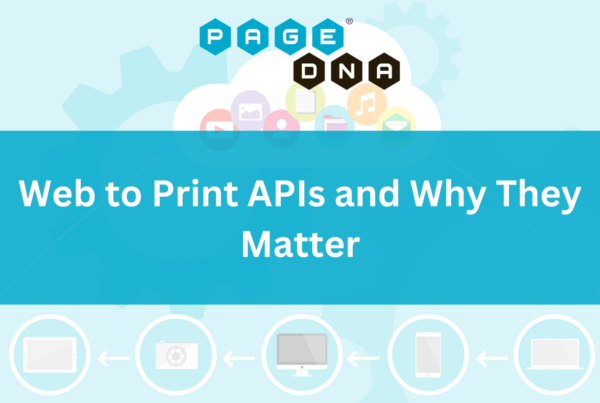Lately, the print sector has experienced a substantial change, mainly fueled by advancements in technology. Web-to-print software has emerged as a game changer, providing organizations with necessary resources to enhance their print operations and meet the evolving demands of consumers. This groundbreaking approach not only improves productivity and productivity but also plays a crucial role in promoting sustainability within the industry. As organizations work to implement greener practices, grasping the effects of web-to-print software on eco-sustainability becomes important.
This article will investigate the multiple elements of web-to-print software, delving into its capabilities and perks while showing how it revolutionizes printing businesses and organizations. From streamlining order processes to facilitating personalized printing, web-to-print solutions are shaping the future of the printing world. Additionally, we will look at how these innovations foster green initiatives by reducing waste and encouraging sustainable methods. Come with us as we uncover the impactful possibilities of web-to-print software and its significant contributions to a more sustainable printing industry.
Comprehending Web-to-Print Software

Online print management solutions is a virtual platform which allows businesses and customers to create, tailor, and order print products over the internet. This technology simplifies the traditional printing process by merging online ordering systems with printing processes. Customers can submit their personal creations or adopt ready-made templates to produce customized products such as brochures, business cards, and banners. Such automation promotes efficiency and facilitates swift turnaround times, which are today's fast-paced market.
An of the main aspects of web-to-print solutions is their capability to facilitate dynamic printing. Such capability allows businesses to tailor print orders for each customer, modifying materials to satisfy specific needs and preferences. For instance, businesses can develop focused marketing campaigns that appeal straight to their target market by customizing messages and visuals. Leveraging such technology, print shops can also enhance client contentment but also boost sales through more impactful custom marketing approaches.
Furthermore, web-to-print software significantly advances order management and workflow within the print industry. It provides a consolidated platform where printing companies can coordinate new orders, monitor status, and interact with clients smoothly. By automating many of the manual processes involved in printing, this software reduces the likelihood of mistakes and misunderstandings, allowing businesses to concentrate on growing their clientele and optimizing their service offerings. This shift to automation and efficiency represents a significant step forward in how printing businesses operate in the digital age.
Benefits and Impact on the Print Industry
Online printing software offers significant benefits to both printing companies and companies, fundamentally transforming how printing services are delivered. One of the main benefits is increased efficiency and efficiency. By automating order processing and workflow systems, printing companies can handle orders faster, minimize errors, and utilize resources efficiently. This streamlined approach not only saves time but also allows printing businesses to focus on new ideas and client support instead of repetitive administrative tasks.
Furthermore, this innovation facilitates customization and personalization at a greater scale. Customers can easily access and customize templates to create distinct products that meet their specific needs. This feature not only boosts customer satisfaction but also promotes greater engagement, fostering loyalty and customer retention. By revolutionizing the personalization aspect of printing, online printing services empower printing businesses to offer tailored products that resonate with individual customers, ultimately leading to improved sales and competitive advantage.
Lastly, web-to-print software supports eco-friendly practices within the print industry. By optimizing order quantities and manufacturing systems, companies can substantially reduce waste and lower their ecological footprint. Additionally, the capability to manage print jobs online minimizes paper usage and the resources involved in traditional printing techniques. As sustainability becomes an more important consideration for consumers, online printing services position print shops as environmentally conscious players in the market, attracting to a growing demographic that values green products and practices.
Eco-friendliness and Upcoming Developments
As the conversation around sustainability continues to grow stronger, the role of web-to-print software in facilitating ecologically friendly practices becomes more vital. This solution enables print businesses to minimize waste by allowing for more precise print runs customized for actual demand. With features such as stock control and on-demand printing, companies can reduce excess materials and optimize resource utilization, leading to a smaller ecological footprint.
Additionally, advancements in tech are paving the way for upcoming trends that improve eco-friendliness within the printing industry. The integration of AI and machine learning in print-on-demand systems is set to transform how print shops operate, enabling more accurate forecasting and resource management. These innovations will likely lead to a shift towards greater eco-friendly production practices, as businesses become more capable to predict consumer needs and adapt their operations accordingly.
Looking ahead, it is clear that the future of print-on-demand will be closely linked to ecological responsibility. As https://output.jsbin.com/mevabuluke/ recognize the importance of eco-conscious practices, we can expect an increased adoption of environmentally friendly technologies within web-to-print platforms. The emphasis on personalization will also encourage responsible use, allowing customers to order only what they need, further contributing to a greener print industry.
